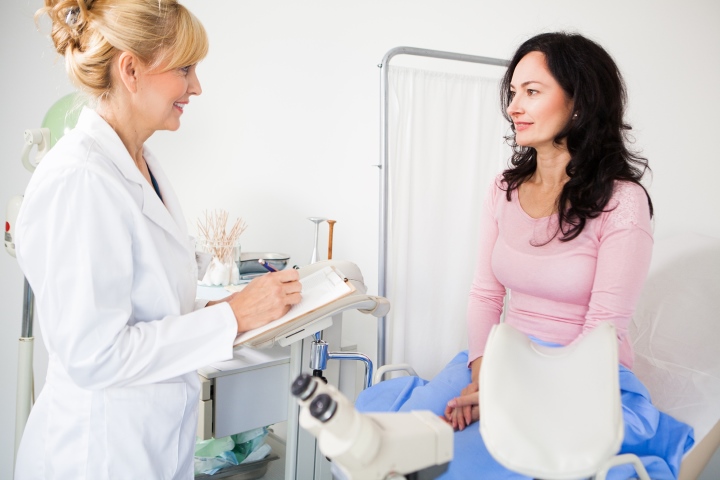Medical developments have opened up possibilities for a variety of diagnostic methods, especially when it involves detecting and assessing diverse gynecological problems. A sonohysterogram, sometimes called sonohysterography, is one such technique. A thorough explanation of sonohysterography is provided in this article, together with information on its purpose, uses, dangers, and expenses, in comparison to a hysterosalpingogram, pre-procedure planning, procedure, and post-operation treatment. This page is a helpful resource for anyone thinking about getting a sonohysterogram or who just wants to learn more about the procedure.
What Exactly Is A Sonohysterogram?
To check the uterus inside, doctors utilize a sonohysterogram, a diagnostic procedure that requires little to no bodily contact. While a transvaginal ultrasound is being done, a sterile saline solution is being injected into the uterus.
The uterine cavity is widened by the saline solution, which improves the ability to see the endometrium , or uterine lining, and any abnormalities that may be prevalent.
Why Would Sonohysterography Be Needed?
Sonohysterography is done for a number of purposes, such as:
Assessment of infertility:
Sonohysterograms are capable of identifying uterine anomalies such as polyps, fibroids, adhesions, or structural issues that may prevent pregnancy.
Examination of unusual uterine bleeding:
A sonohysterogram can help determine the underlying cause of excessive or irregular monthly flow, which might include polyps, fibroids, or endometrial hyperplasia.
Evaluation of recurrent miscarriages:
Sonohysterography can detect uterine cavity conditions such as a uterine septum or adhesions that may be responsible for repeated losses.
Finding uterine abnormalities before fertility treatments:
It’s important to determine if the uterus cavity meets the requirements for implantation prior to beginning infertility therapies. Sonohysterography aids in spotting any possible problems and directs further treatment.
Sonohysterography Risks
Although sonohysterography is often seen as safe, there are always possible dangers associated with any medical practice. These dangers consist of:
Pain or discomfort during the procedure:
Some women might experience moderate pain or cramping while the catheter is inserted or as saline solution is infused.
Infection:
Sonohysterography carries a negligible risk of infection, notwithstanding its rarity. This danger is reduced by using sterile procedures.
Perforation or damage:
The uterus or other tissues may occasionally get perforated or damaged as a result of catheter insertion or saline solution distension of the uterus. This danger is really minimal, though.
During a sonohysterogram, other fertility tests
Additional fertility tests may be run concurrently with a sonohysterogram to provide more complete data. The examinations might consist of:
Endometrial biopsy:
A small portion of the endometrial tissue might be taken for further analysis if any suspicious regions or abnormalities are seen while performing the sonohysterogram.
Saline-infused sonography (SIS):
SIS is a sonohysterographic procedure whereby the uterus is injected with saline solution, avoiding the need for a catheter. This method offers comparable insights into the uterine cavity.
How Painful Is The Sonohysterography Test?
The degree of discomfort or suffering associated with any medical procedure is a typical worry. Mild pain or cramping is typical throughout a sonohysterography exam. This may happen while the catheter is placed or when the uterus is expanded by infusing saline solution into it. Nevertheless, for the majority of women, the discomfort is typically transient and bearable. It’s crucial to tell your healthcare professional right away if you encounter severe or prolonged discomfort.
Is A Hysterosalpingogram Superior To A Sonohysterogram?
Although hysterosalpingograms (HSG) and sonohysterograms are also important diagnostic procedures, they have distinct goals. Transvaginal ultrasonography and saline solution are used in sonohysterography to assess the uterine cavity’s shape and anomalies.
Finding polyps, fibroids, adhesions, and various other uterine abnormalities that might affect fertility, cause irregular bleeding, or cause repeated miscarriages is one of its main applications.
HSG, on the other hand, mainly uses contrast dye and X-rays to look at the uterus and fallopian tubes. It aids in determining the fallopian tubes’ patency and can spot problems like blockages or anomalies, which can affect fertility. The decision between the two tests relies on the unique diagnostic requirements of each person. Every examination has benefits and limits of its own.
How Should I Get Ready for the Sonohysterography Exam?
A sonohysterography test may be performed more smoothly and effectively if you prepare beforehand. The following are some typical principles:
Arrange the test:
Speak with your doctor to arrange the sonohysterography test, preferably within the first part of your period but not throughout it.
Share your medical history:
Let your doctor understand any current illnesses, allergies, or prescription drugs you’re using. They can evaluate any possible dangers or essential safeguards with this information.
Empty your bladder:
To increase comfort throughout the test, empty your bladder before the operation.
Pain management:
Talk with your healthcare practitioner about pain treatment alternatives if you are worried about discomfort during the operation.
What Steps Are Taken During a Sonohysterogram?
The subsequent stages are routinely performed throughout the sonohysterography procedure:
- Positioning: You are going to be placed in a posture similar to that of a pelvic exam on an examination table.
- Sterile conditions: To reduce the danger of infection, sterile procedures will be implemented. The medical professional will put on gloves and utilise sterile equipment.
- Transvaginal ultrasound: to examine the uterus and ovaries, a transvaginal ultrasound probe will have to be put into the vagina.
- The insertion of a catheter: A thin, flexible catheter will be carefully placed into the uterus through the cervix.
- Saline Soution: Sterile saline solution will be progressively introduced into the uterus when the catheter is in place. The uterine cavity is widened by the remedy, which makes it simpler to spot any anomalies.
A sonohysterogram typically serves to assess the uterine cavity’s structural integrity and to identify specific diseases such as polyps, fibroids, and adhesions. Although it can aid in locating aberrant growths or dubious regions inside the uterus, the test is not intended to be a reliable way to find cancer. If cancer has been identified, additional diagnostic procedures like a biopsy or imaging tests like an MRI or CT scan may be required to determine whether malignant cells are present. When cancer appears to be present, it is crucial to speak with a healthcare professional for a thorough assessment and the best diagnostic strategy.
An examination of the uterine cavity is done during a sonohysterogram, often known as a saline sonogram. There is no concrete evidence to support the claim that it directly causes higher fertility; nevertheless, it can aid in the identification and treatment of several disorders that may impair fertility.
In summary, a sonohysterogram, also known as a saline sonogram, is an important diagnostic technique used to assess the uterine cavity’s structural integrity. It can help in spotting ailments including polyps, fibroids, adhesions, and other anomalies that may affect fertility, irregular bleeding, or repeated miscarriages. Although the process could be slightly uncomfortable, most people tolerate it well. It’s crucial to remember that a sonohysterogram doesn’t necessarily lead to more fertility. Its main objective is to offer crucial diagnostic data that can influence further actions and therapies aimed at enhancing reproductive results. Discuss with a healthcare professional who can offer personalized advice and suggest the best therapies depending on your unique requirements and medical background if you’re experiencing reproductive difficulties.
Resources:
https://www.ncbi.nlm.nih.gov/pmc/articles/PMC3650208/
https://www.ncbi.nlm.nih.gov/pmc/articles/PMC3156516













